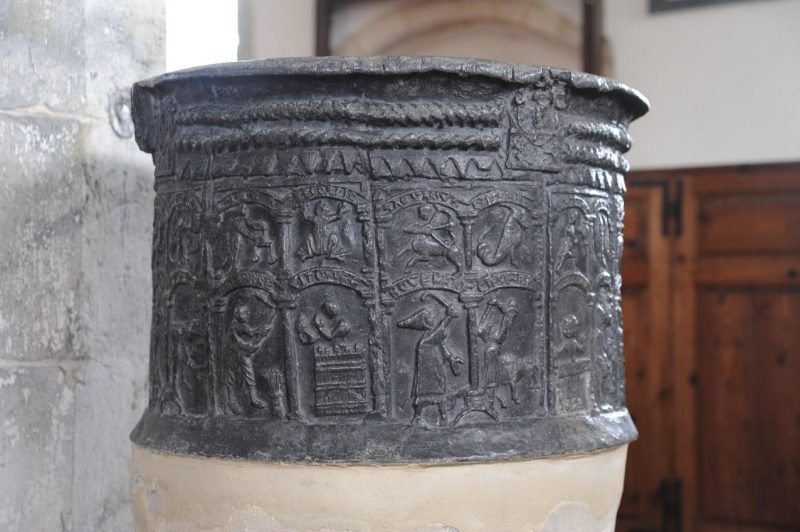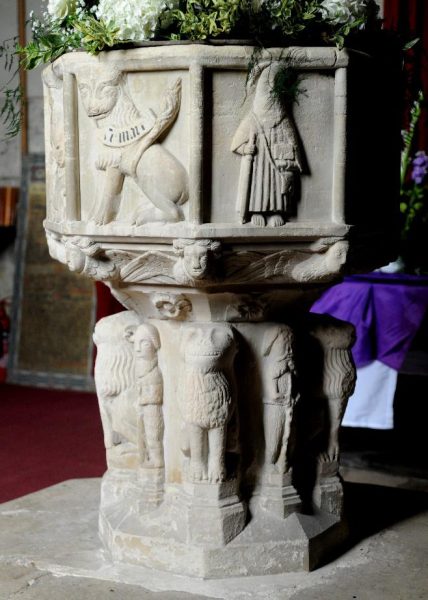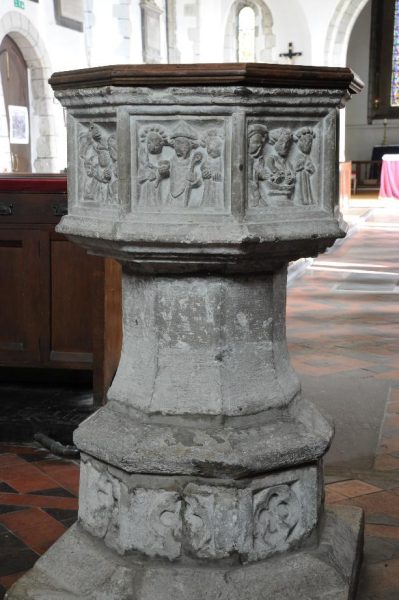The sacrament of baptism has a special place in Christianity. Every church has a font and a disproportionate number of fonts are of early date and have been retained even if the church itself has been rebuilt, often several times. This suggests that fonts have a particular sanctity and are cherished more than any other item of church furniture. John Vigar’s very stimulating talk about fonts in Kent explained the theology and debunked a number of myths, explaining, for instance, that the thirteenth century requirement to provide each font with a lockable cover was to keep the consecrated water clean, not to prevent its theft for use in magical, non-Christian practices as is often alleged. John took his audience – almost 60 of us – through the history of fonts in Kent using more than 50 examples, the earliest Norman or even Saxon, the latest from the 19th and 20th centuries. He illustrated not only stylistic development but also the place of certain fonts in the county as part of a group, each with similar decorative treatment.

Lead font at St Augustine, Brookland
Three fonts which John discussed stand apart from others in the county because they are either imports or are at least in a style which is not native to the county. The most famous of these is the twelfth century lead font at Brookland, decorated with Signs of the Zodiac and clearly of French manufacture.

St James, Staple

St Peter & St Paul, Farningham
At Staple there is a fifteenth century font with statuettes of lions and wild men (sometimes called ‘wodehouses’) around its stem – clearly imported from East Anglia, where there are many such fonts, or copied from an East Anglian example. And at Farningham there is a late medieval Seven Sacrament font – with carved reliefs of the seven sacraments of the Church, including baptism. This is again of a type common in East Anglia but elsewhere found only at Farningham and at Nettlecombe in Somerset. One would like to know where these fonts were made – geological analysis of the limestone from which they are carved might provide the answer. John Vigar’s talk on what might have been a rather dry subject was in fact most stimulating and greatly enjoyed by his audience.

